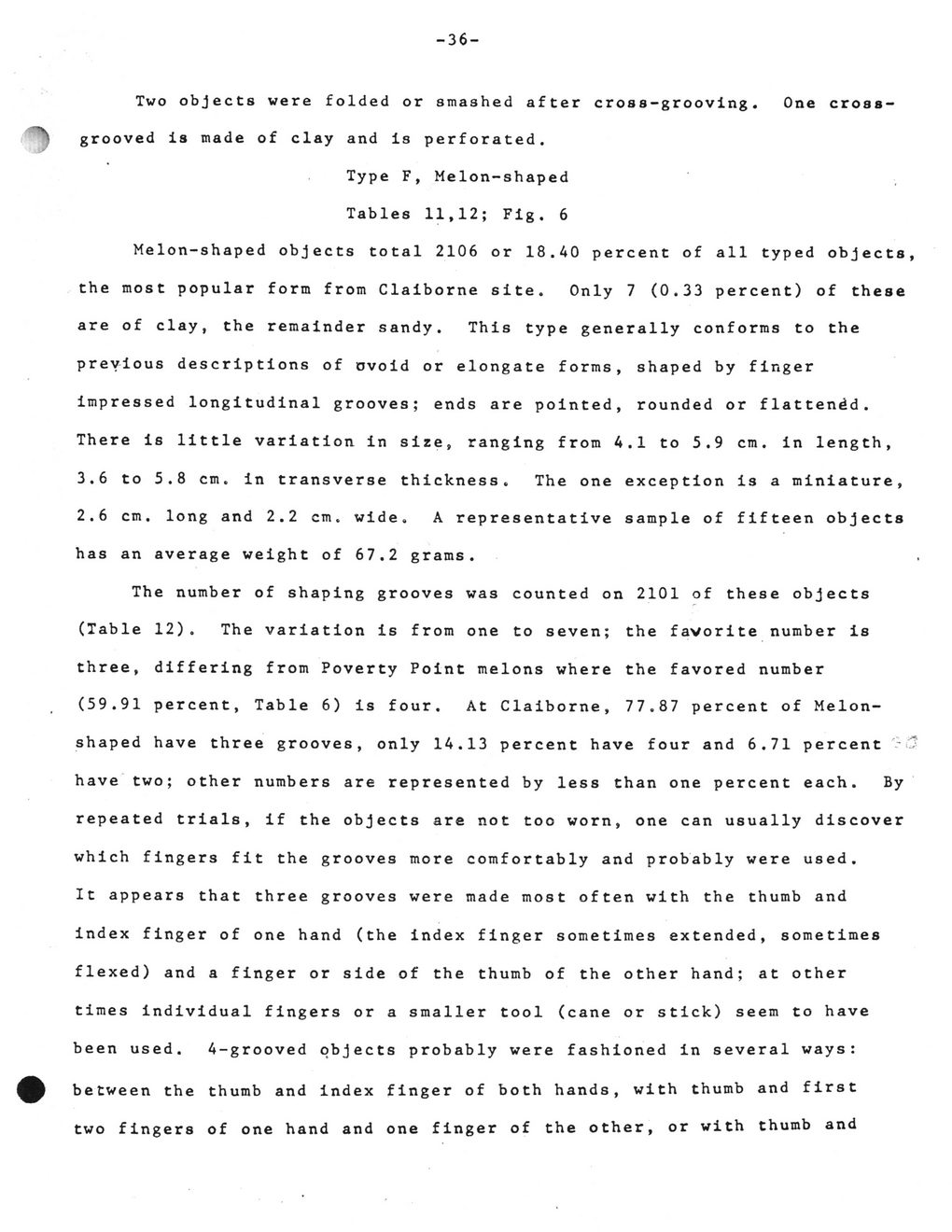This text was obtained via automated optical character recognition.
It has not been edited and may therefore contain several errors.
Two objects were folded or smashed after cross-grooving. One crossgrooved is made of clay and is perforated. Type F, Melon-shaped Tables 11,12; Fig. 6 Melon-shaped objects total 2106 or 18.40 percent of all typed objects the most popular form from Claiborne site. Only 7 (0.33 percent) of these are of clay, the remainder sandy. This type generally conforms to the previous descriptions of ovoid or elongate forms, shaped by finger impressed longitudinal grooves; ends are pointed, rounded or flattened. There is little variation in size, ranging from 4.1 to 5.9 cm. in length, 3.6 to 5.8 cm. in transverse thickness. The one exception is a miniature, 2.6 cm. long and 2.2 cm. wide. A representative sample of fifteen objects has an average weight of 67.2 grams. The number of shaping grooves was counted on 2101 of these objects (Table 12). The variation is from one to seven; the favorite number is three, differing from Poverty Point melons where the favored number (59.91 percent, Table 6) is four. At Claiborne, 77.87 percent of Melonshaped have three grooves, only 14.13 percent have four and 6.71 percent > have two; other numbers are represented by less than one percent each. By repeated trials, if the objects are not too worn, one can usually discover which fingers fit the grooves more comfortably and probably were used. It appears that three grooves were made most often with the thumb and index finger of one hand (the index finger sometimes extended, sometimes flexed) and a finger or side of the thumb of the other hand; at other times individual fingers or a smaller tool (cane or stick) seem to have been used. 4-grooved objects probably were fashioned in several ways: between the thumb and index finger of both hands, with thumb and first two fingers of one hand and one finger of the other, or with thumb and

Walden 046